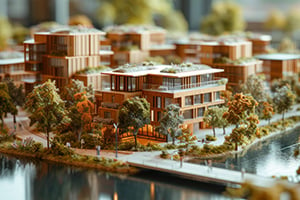By Dallas Terry
Senior Energy Consultant
CEM, LEED AP BD+C
Sustainable Investment Group (SIG)
In 2018 the USGBC launched LEED Zero certifications to help building owners and occupiers tackle the next frontier in Green Building design and performance. Since that time more than 16 projects have certified or are in the process and more Net Zero case studies that have become available, highlighting the importance of achieving and maintaining target performance levels. This is needed at a time when the real estate industry and building codes are embracing ambitious carbon reduction goals and more net zero projects are needed to help the planet avert the worst impacts from climate change.

Although other net zero certification frameworks exist (i.e. ILFI’s ZE certification), LEED Zero’s relative simplicity and ties to the USGBC make it a valuable tool to support goals related to key impact areas in building operations. Another unique feature of LEED Zero (Energy) is that the certification uses source energy in the calculation as opposed to site energy.
Certification Tracks
Both New Construction and existing building projects are eligible for LEED Zero and separate certification tracks exist for energy, carbon, water and waste. The table below shows the formulas to demonstrate net zero performance compliance for each certification track:
| Certification Track | Formula |
| LEED Zero Energy | Total Energy consumed – (Energy generated onsite + procured offsite) =<0 |
| LEED Zero Carbon | Carbon caused (building energy consumption + occupant transportation) – Carbon Avoided = <0 |
| LEED Zero Water | Total Potable Water Consumed – (Total Alternative Water Used + Water Returned to Original Source) =<0 |
| LEED Zero Waste | TRUE Waste Certification at Platinum Level |
Table 1: LEED Zero Certification Tracks
Based on the number of projects certified to date, LEED Zero Energy and Carbon certifications appear to be the most popular tracks. Projects must demonstrate that onsite energy consumption and occupant transportation impacts (in the case of LEED Zero Carbon) are completely offset by either onsite renewable energy generation (i.e. Solar Photovoltaics) and/or offsite procurement (i.e. Renewable Energy Credits). This makes it feasible for a greater number of buildings to certify, since not all buildings have space for onsite renewables. Although there is no requirement to pursue a particular procurement strategy, they do encourage that projects prioritize options in the following order:
- Onsite renewables
- Local generation (i.e. community solar or wind)
- Other offsite renewables (i.e. PPAs)
- Renewable Energy Credits or Energy Attribute Certificates (RECs or EACs)
- Carbon Credits (only eligible for Zero Carbon certification, not LEED Zero)
LEED Zero Water follows a similar structure with alternative on and offsite alternative water sources eligible to offset consumption. Onsite water sources need to reuse water onsite (i.e. such as with captured rainwater or AHU condensate) or demonstrate that it will return to the local aquifer (i.e. such as with constructed wetlands or bioswales). Sourcing offsite water that has been treated and recycled (i.e. reclaimed water delivered from a municipality) is another way to offset onsite consumption.
Last but not least, LEED Zero Waste takes a different approach and requires projects to obtain the TRUE certification at a platinum level. TRUE is a holistic certification administered by GBCI that follows a credit based system like LEED for New Construction. It goes well beyond waste diversion, focusing on upstream and downstream best practices for sustainable management of organizational solid waste.
Applying LEED Zero
For large, complex new builds and major renovations pursuing LEED Zero, an integrated design approach may be an effective strategy and is encouraged by the USGBC. Setting clear targets early in the pre-design phase with broad stakeholder input and running multiple energy/water model iterations of different design options can help projects identify and implement the optimum design faster and at an overall lower cost (i.e. an improved envelope can reduce the need for a larger HVAC system).
LEED Zero certifications may also be useful for large existing building portfolios looking to integrate the next wave of green building certifications into their sustainability programs. For example, strategic portfolio-wide assessments of LEED Zero certification feasibility based on current EUI, onsite renewables potential, utility rates, carbon reduction goals and other factors could help organizations determine where, when and how to execute LEED Zero projects that support their overarching sustainability goals.
From a tactical standpoint all LEED Zero certifications are achieved through submission of data and documentation via the ARC platform and maintaining the certification requires projects to report performance annually and recertify every 3 years, all of which will be familiar to organizations that have been recertifying their buildings under LEED 4.1.
SIG has the expertise to plan and execute net zero certifications, energy models, audits and renewable energy studies. Please feel free to reach out to learn more or to discuss an upcoming project.
Email Dallas Terry: dallast@sigearth.com
Phone: 415-450-8390
Credits:
Figure 1: Discovery Elementary School
http://plus.usgbc.org/first-three-leed-zero-energy-projects-show-the-market-whats-possible/
Figure 2: Entegrity HQ
http://plus.usgbc.org/first-three-leed-zero-energy-projects-show-the-market-whats-possible/
Table 1: LEED Zero Certification Tracks
https://www.usgbc.org/resources/leed-zero-program-guide
© 2020 Sustainable Investment Group (SIG). All rights reserved.



